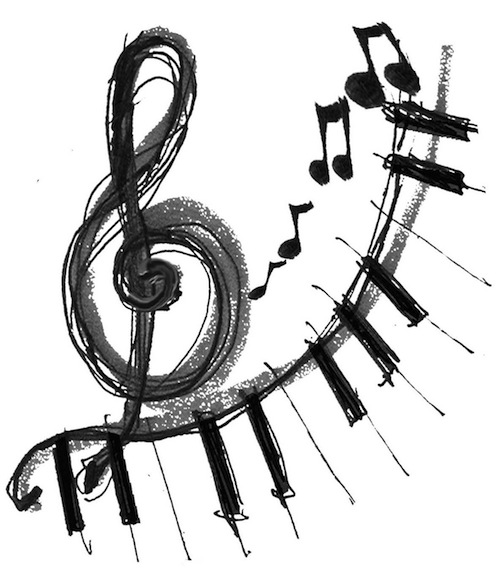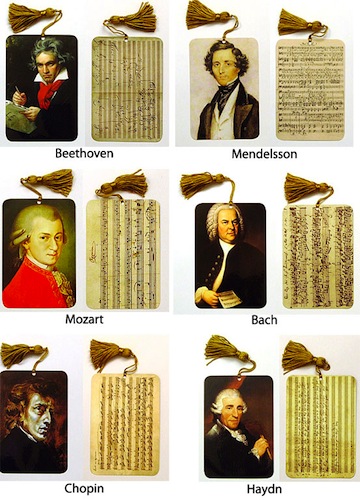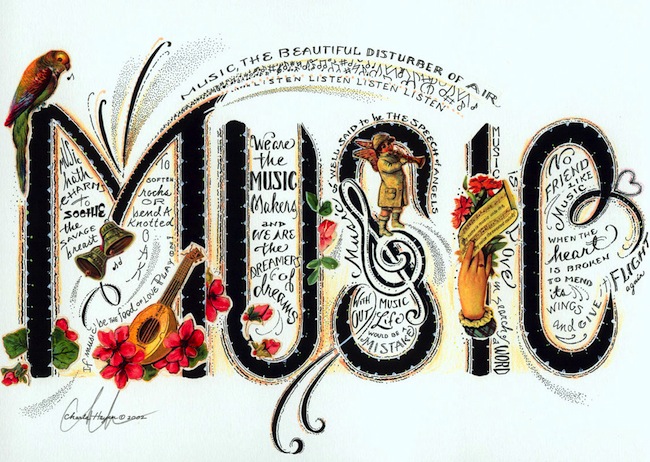Many set forms have emerged as Western music has developed. New forms have come into being as composers have experimented with preexisting forms.
- Ballet: A staged theatrical dance work, typically one that tells a story and is accompanied by music. A ballet may be full-length or a short repertory piece.
- Cantata: A large-scale vocal work in several movements, typically with soloist singers, a chorus, and instrumental accompaniment. Although usually associated with religious functions, they also may be used in secular settings.
- Chamber music: Music for small instrumental ensembles.
- Concerto: A piece, typically with three or four contrasting movements, that sets one or more solo instruments against a larger ensemble. Early Baroque concertos often took the form of theconcerto grosso—a small group of soloist instruments as soloists that exchanged music with a larger orchestral group. Later, the concerto evolved into a work with one soloist featured against a full orchestra.
- Dance forms: Forms from popular or folk dance used in music, often with a degree of nationalism present in the composer’s intent. Examples of dance forms include the gigue, ländler, mazurka, polonaise, sarabande, tango, tarantella, and waltz. In Europe, the most prominent of these was the waltz, an elegant and graceful dance in 3/4 time.
- Etude: A short solo piece (literally, French for “study”) designed to improve the performer’s technique by isolating specific difficulties and concentrating on their mastery.
- Fantasia: A free form with loose definitions and unspecified structure. Many fantasias feature imaginative development and an improvisatory character.
- March: An instrumental piece with strong rhythm in 2/2 or 2/4 time. Marches were developed for military needs and typically feature brass, wind, and percussion instruments.
- Mass: The standard liturgy of the Catholic church service set to music. Standard sections of the Mass include the Kyrie, Gloria, Credo, Sanctus, and Agnus Dei.
- Minuet and trio: The usual form for third movements of Classical symphonies. Often, the movement is of a light dance quality in triple meter, beginning with a section called a minuet, followed by a contrasting section called a trio, and then finished with a return to the minuet (another example of ABA form). Romantic composers eventually rejected the minuet and trio in favor of the scherzo.
- Motet: A choral composition, usually sacred and without instrumental accompaniment.
- Nocturne: A short, lyrical, and often moody solo piece, typically for piano. Chopin wrote many notable nocturnes.
- Opera: A staged theatrical work in which the drama is conveyed primarily through singing. Operas feature solo singers and often a chorus and substantial orchestral accompaniment. Operas often are full-length works, one to five hours in duration, and usually are divided into acts. The text of an opera is called a libretto. In many instances, the libretto is written by an artist other than the composer, although some composers have written their own.
- Oratorio: A non-staged dramatic vocal work of a religious nature. An oratorio is like a sacred cantata but typically larger in scope and length, and like an opera but not staged.
- Overture: A composition that serves as an introduction for another, longer work, such as an opera or oratorio.
- Prelude: A short character piece, often for piano.
- Requiem: A death Mass set to music, following a set structure and often written to honor a specific individual.
- Rhapsody: A freeform instrumental work in one movement, often based on folk or popular themes.
- Scherzo: A light, quick instrumental or vocal work.
- Sonata: A piece for one or more solo instruments, usually divided into three or four (typically contrasting) movements. Sonatas may feature the solo instrument alone or accompanied, typically with keyboard.
- Song cycle: A series of vocal pieces or lieder (plural of lied, the German word for song) for a soloist with piano accompaniment. The songs within a cycle may be connected thematically and sometimes feature lyrics written by the same author or poet. Schubert is famous for his song cycles.
- Symphony: A work for orchestra, usually of substantial length and of several contrasting movements —for example, a fast first movement followed by a slow second movement. As the symphony developed, it increased in size and scope: Some Romantic symphonies approach two hours in length and require a large orchestra.
- Theme and variations: A piece that begins with an opening theme that then evolves and develops through multiple variations. Typically, each variation comments on the original theme or on the previous variation. Many composers have written variations on themes written by other composers, as in Brahms’s Variations on a Theme of Haydn.
- Tone poem: A freeform single-movement programmatic orchestral work that recounts a story or depicts an image or setting. Liszt pioneered the tone poem.




















